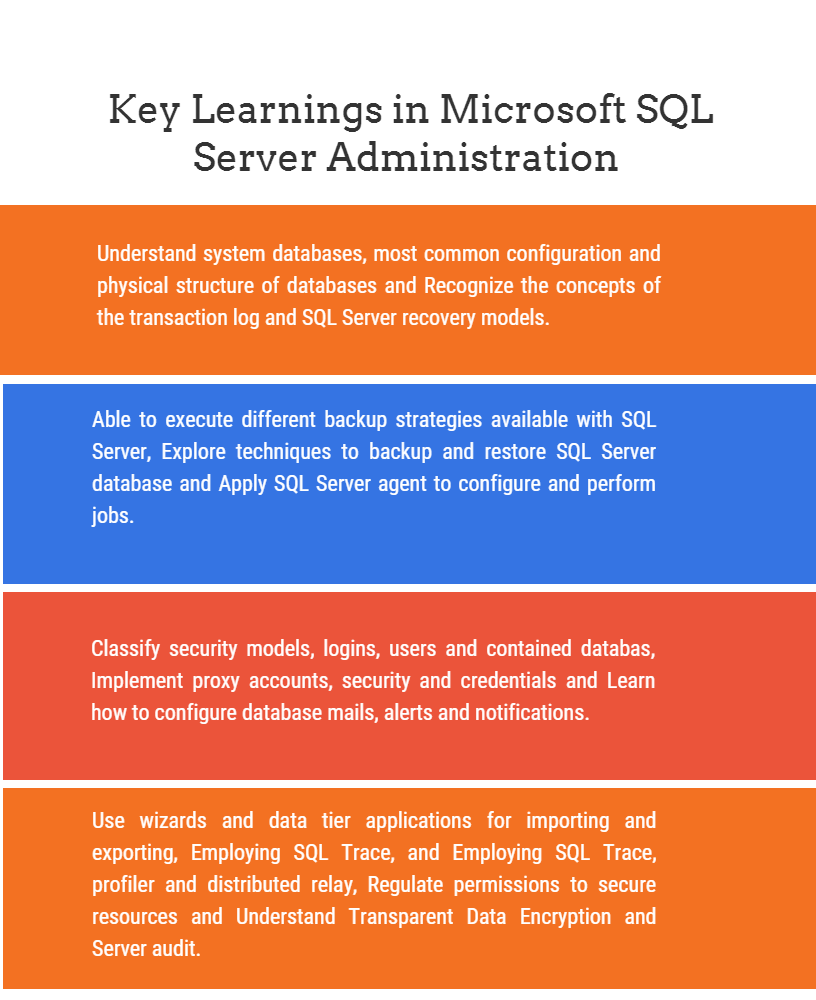An Introduction to SQL Server 2014 database administration
Overview of Database Administration
Common database administration tasks
Introduction to SQL Server Platform
Understand Database Management Tools
Identify Database Management Techniques
Install and configure SQL Server 2014
SQL Server installation planning
Install SQL Server 2014
Perform Post installation configuration tasks
Working with Database and Storage
Introduction to Data Storage with SQL Server
Manage storage for system databases
Manage storage for user databases
Move databases files
Configure the buffer pool extension
Plan and Implement a Backup Strategy
Understand SQL Server Recovery Models
Describe functionality of database transaction logs
Plan Backup strategy for SQL Server database
Backup Databases and Transaction Logs
Use Backup options
Perform compressed, copy only and encrypted backups
Ensure maximisation of Backup Reliability
Restore SQL Server 2014 Databases
Describe the restore process
Techniques for restoring databases
Perform advanced restore operations
Work with point in time recovery
Import and Export data
Introduction to Transferring Data
Explore tools and techniques for transferring data
Import and Export Table Data
Copy or Move a Database
Monitor SQL Server 2014
Introduction to Monitoring SQL Server
Use Activity Monitor
Diagnose considerations for monitoring SQL Server
Employ Dynamic management functions and views
Use Performance monitor
Tracing SQL Server Activity
Tracing SQL Server Security
Use troubleshoot and captured traces to test
Optimize database performance
Manage SQL Server Security
Introduction to SQL Server Security
Classify core security concepts
Manage Server level security
Manage Database Level Principle
Manage Database Permissions
Auditing Data Access and Encrypting Data
Understand Audit Data Access in SQL Server
Identify options for auditing data access
Perform SQL Server Audit
Execute Transparent Data Encryption
Performing Ongoing Database Maintenance
Overview of Database Integrity
Ensure integrity by using DBCC CHECKDB
Maintain database indexes
Database Maintenance Routine Automation
Configure database maintenance plans
Automate SQL Server 2014 Management
Describe SQL Server Management Automation
Perform and manage SQL Server Agent jobs
Create jobs, job step types, and schedules
Manage Job Step Security contexts
Manage Jobs on Multiple Servers
Configure master and target servers
Monitor SQL Server 2014 by using Alerts and Notifications
Monitor SQL Server Errors
Configure Database Mail
Setting up operators, Alerts, and Notifications





